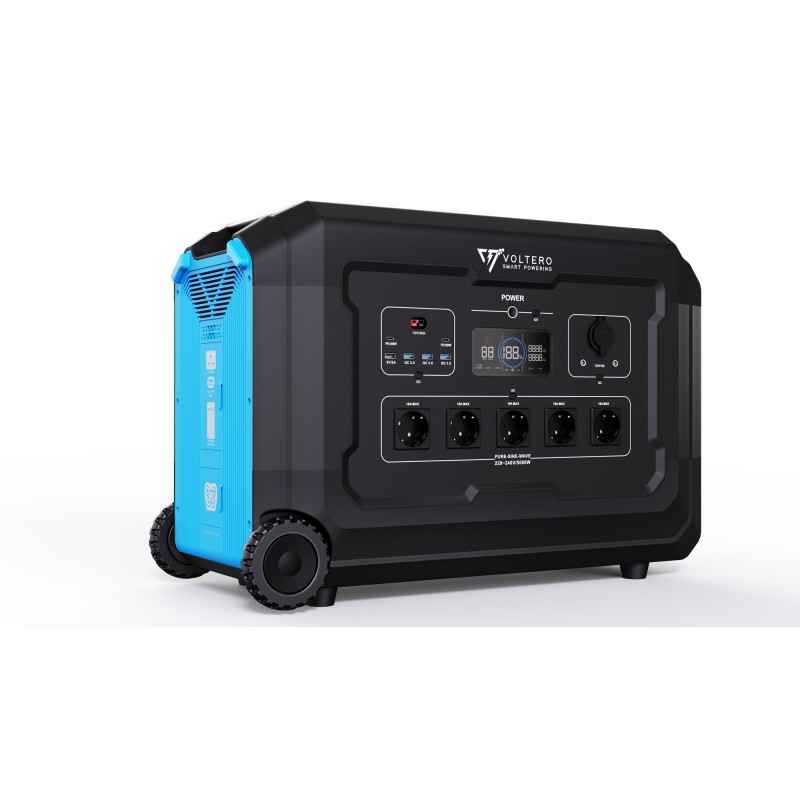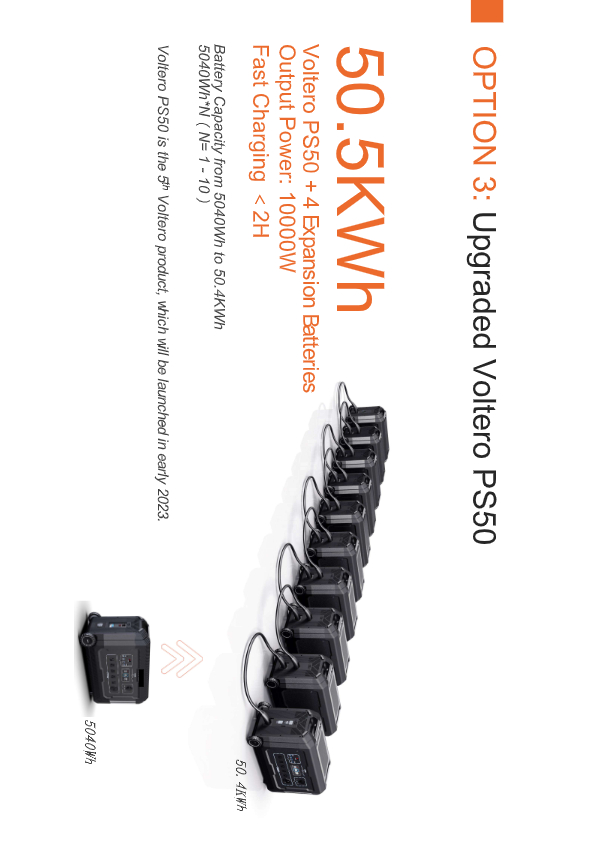Voltero is about to launch a series of Home Energy Storage System – Home Backup Power
Home Solar Energy Systems
Voltero upcoming all-in-one home energy storage system acts as a backup power source for your home.
After the company’s R&D and continuous improvement of product lines, we are about to launch a series of home energy storage systems, which are still in the production and promotion stage, and our engineers and R&D team are constantly improving. Please look forward to it. Next, let’s take a look at what a home energy storage system is.
What is a home energy storage system?
Home energy storage devices store electricity locally for later use. Electrochemical energy storage products, also known as “battery energy storage systems” (or “BESS” for short), at their core are rechargeable batteries, usually based on lithium-ion or lead-acid batteries, controlled by a computer that handle charge and discharge cycles through intelligent software. The company is also developing small-flow battery technology for home use.
As local energy storage technologies for home use, they are the smaller relatives of battery-based grid energy storage and support the concept of distributed generation. When paired with on-site generation, they can virtually eliminate power outages in off-grid lifestyles. As they make solar power more reliable, these storage systems are becoming more commonplace as the falling price and environmental advantages of solar power make it an increasingly common alternative to conventional power generation.
The principle of the home energy storage system
Home energy storage consists of batteries that allow you to store excess electricity for later use, and when combined with solar energy generated by a photovoltaic system, batteries allow you to store energy generated during the day for use around the clock. Because battery energy storage systems optimize the use of electricity, they ensure that your home solar system operates most efficiently. At the same time, they also guarantee continuity in the event of a temporary power interruption and have extremely short response times. Home energy storage further supports self-consumption: surplus energy generated during the day from renewable energy sources can be stored locally for later use, reducing reliance on the grid. Thus, energy storage batteries make self-consumption more efficient. Home battery storage systems can be included with solar systems at installation or added to existing systems.
Demand for home energy storage systems continues to grow by leaps and bounds
Taking Germany, the largest household battery market in Europe, as an example, as of the end of last year, its household battery energy storage market covered more than 300,000 household users, and the proportion of battery energy storage systems deployed exceeded 70%.
Relevant data shows that as of the end of last year, the cumulative installed capacity of household energy storage batteries in Germany, the United States, Japan, and Australia was around 1-2.5GWh. If the capacity of each household is calculated at 10kWh, the total installed energy storage capacity of homes is 10-25 million sets…
Based on this calculation, the penetration rate of household energy storage batteries in Germany, the United States, Japan, and Australia is about 1% of the stock of detached houses. If the current household photovoltaic penetration rate of about 10% is used as a reference, this means that the penetration rate of household energy storage systems There is at least 10 times more room for improvement.
How do home battery energy storage systems work?
Lithium-ion battery systems are the most commonly used type and consist of several parts:
· Battery cells, are manufactured by battery suppliers and assembled into battery modules (the smallest unit of an integrated battery system).
· Battery rack, consisting of connection modules that generate DC current. These can be arranged in multiple racks.
· An inverter that converts the DC output of the battery to an AC output.
· A battery management system (BMS) controls the battery and is usually integrated with a factory-built battery module.
Generally speaking, solar battery storage works like this: The solar panel is connected to a controller, which is connected to the battery rack or battery pack that stores it. When needed, the current from the battery must pass through a small inverter to convert it from alternating current (AC) to direct current (DC) and vice versa. Electricity is then passed through a meter and supplied to a wall outlet of your choice.
How much energy can a home battery storage system store?
Energy storage power is measured in kilowatt-hours (kWh). Battery capacity can vary from 1 kWh to 10 kWh. Most households opt for a battery with a storage capacity of 10 kWh, which is the output when the battery is fully replaced (minus the minimum charge the battery needs to remain on). Given the question of how much power a battery can store, most homeowners typically choose only their most important appliances to connect to the battery, such as the refrigerator, a few outlets to charge their phones, lights, and a wifi system. In a complete power outage, a typical 10 kWh battery will store power for 10 to 12 hours s, depending on which battery is required to power the battery. A 10 kWh battery can run a refrigerator for 14 hours, a TV for 130 hours, or a single LED light bulb for 1,000 hours.
Why do we need energy storage systems?
In short, energy storage saves electricity for later, when and where it is needed most. It plays an essential role in this balancing act and helps create a more flexible and reliable grid system for everyone to use. Improved energy storage technologies offer several economic and environmental benefits.
Advantages of home energy storage system:
With home energy storage batteries, you can increase the amount of self-generated electricity you consume, rather than consuming it from the grid. This is known as self-consumption, or the ability of a home or business to generate its own electricity, and is an important concept in today’s energy transition. One of the advantages of self-consumption is that customers only use the grid when they are not using self-generated electricity, saving costs and avoiding the risk of outages. Energy independence from self-consumption or off-grid means you’re not dependent on the utility for your energy needs, so you’re protected from price spikes, supply fluctuations, and blackouts. If one of your main reasons for installing solar panels is to reduce carbon emissions, adding batteries to your system can help you get the most out of your greenhouse gas emissions and home carbon footprint. Home energy storage systems are also cost-effective because you will use a clean, renewable energy source that is completely free: the sun to store your electricity.
· Economy:
The solar self-consumption rate and solar coverage rate are increased, the electricity price optimization of the time-varying electricity price can be expected in the future, and the demand for expansion of the distribution network is reduced
· Ecology:
Reduction of CO2 emissions through the use of solar energy, no land consumption through the use of suitable roof surfaces, reduction of grid extension requirements at the distribution grid level
Home energy storage: self-sufficiency and contribution to the energy transition
Further arguments for the use of photovoltaic home storage systems are the desire for greater independence from energy suppliers and a willingness to actively contribute to the success of the energy transition. In Germany, around 50% of newly installed PV systems in the single-family housing market are now equipped with battery storage. Additionally, older systems are expected to be equipped with battery storage systems as soon as their guaranteed feed-in tariffs end.
Next, let us look forward to the development of Voltero home energy storage system products.





















